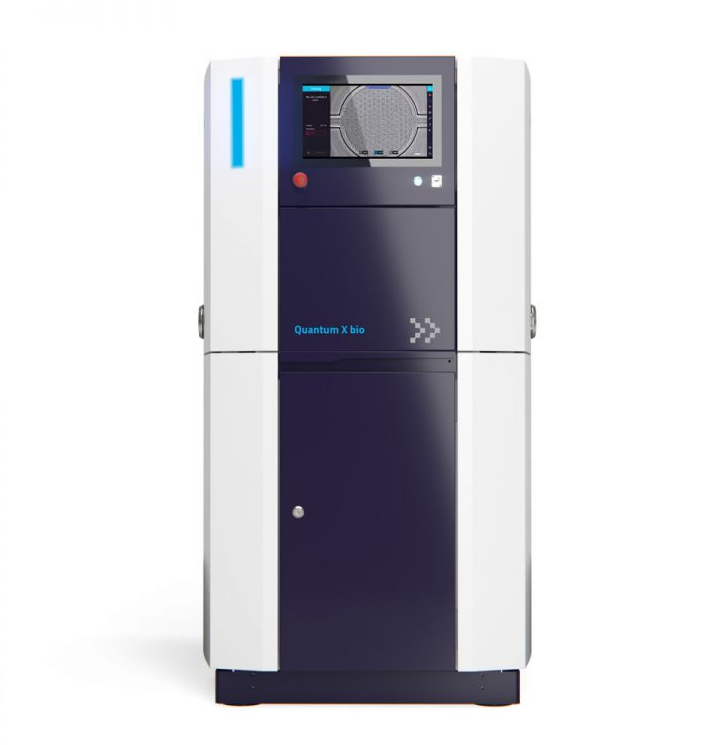After securing a £612,176 grant from the Biotechnology and Biological Sciences Research Council (BBSRC), Aston University is set to integrate a Quantum X bio 3D printer into its research facilities.
Developed in partnership with BICO companies CELLINK and Nanoscribe, this 3D printer will enhance the university’s biosciences research capabilities. Awarded in response to BBSRC’s ALERT 2022 funding call for mid-range equipment for biosciences research, the grant is led by Professor Rhein Parri from Aston Pharmacy School. The Quantum X bio 3D printer utilizes 2-photon polymerization (2PP) to precisely print 3D structures, enabling researchers to explore cell orientations similar to those in vital organs like the brain and liver.
“This new bioprinter will transform our ability at Aston University and the wider West Midlands to conduct 3D printing and make new discoveries in basic biological and tissue engineering research. The Quantum X bio is the first bioprinter of its kind to be installed by Nanoscribe in the UK, and will be made available to the wider research community of the Midlands Innovation Universities of Birmingham, Loughborough, Nottingham, Leicester and Warwick. Aston University is preparing a room with a controlled environment to house the printer, and associated cell culture facilities. The bioprinter is expected to be in use from April 2024,” said Professor Parri.
 Quantum X bio 3D printer. Photo via CELLINK.
Quantum X bio 3D printer. Photo via CELLINK.
A bioprinting research initiative
With a focus on scientific exploration, the team comprising researchers from various departments, plans to leverage the Quantum X bio to create ordered networks of human brain cells called astrocytes. The 3D printer will facilitate studying astrocytes’ functions in fundamental brain processes without resorting to traditional 2D cultures. Researchers including Professor Roslyn Bill, Dr. Emma Shepherd, Dr. Philip Kitchen, and Dr. John Simms from the School of Biosciences. Additionally, Dr. Craig Russell and Nathan Suray from Aston Pharmacy School, along with Paul Gretton and Professor Edik Rafailov from the College of Engineering and Physical Sciences, are integral members of this multidisciplinary team.
Other research initiatives include investigating the blood-brain barrier, printing soft 3D models of liver cells, developing a model for drug delivery to the eye, and studying G protein-coupled receptors (GPCRs) on cell surfaces. These projects aim to deepen the team’s understanding of critical biological processes such as brain degeneration, liver function, drug transport, and cellular responses to external stimuli.
“At the heart of our mission is the commitment to empower researchers with state-of-the-art bioprinting technologies, fostering new scientific breakthroughs. The acquisition of the Quantum X bio by Aston University marks a significant step towards advancing research in tissue engineering and drug discovery within the UK research landscape,” said, Cecilia Edebo, CEO at CELLINK.
Professor Parri envisions the Quantum X bio fostering collaboration across scientific communities, particularly in cell biology, organ-on-a-chip, and microfluidics. The installation of this technology complements Aston University’s existing expertise in 3D printing, particularly in the Advanced Prototype Facility within the Aston College of Engineering.
“Together with Nanoscribe, members of the BICO group, we are thrilled to continue our support to the research community and are excited to witness the incredible outcomes that will undoubtedly emerge from the use of this groundbreaking technology,” added Edebo.
Manufacturing on Demand
Video via CELLINK.
Technical specifications of Quantum X bioprinter
| Maximum print area | 50 x 50 mm² |
| Photoresins | Open system for custom materials,Hydrogels/Bioresins from Advanced BioMatrix, Cellink and BIO INX,Nanoscribe IP/IPX Photoresins (polymers),Nanoscribe acrylate, PDMS and glass photoresins (biocompatible, ISO 10993-5) |
| Substrates | Microscope slides / microfluidic chips (3” x 1” / 76 x 26 mm2),Cell culture imaging dishes (35 mm or 50 mm),Wafers from 1” to 8” (25.4 mm to 200 mm)Glass, silicon, and further transparent, opaque materials, and coated/uncoated substrates |
| Printing technology | Layer-by-layer 3D printing based on Two-Photon Polymerization (2PP),Upright platform with Dip-in Laser Lithography (DiLL) |
| Live-cell printing viability | > 90 % |
| Maximum scan speed | 6.25 m/s divided by lens magnification |
| Stitching-free part diameter | up to 4,000 µm |
| Feature size control | down to 100 nm |
You might also like:
Stratasys and Siemens Healthineers transform CT imaging technology: Ensuring complete radiographic accuracy for patient-specific pathology, this partnership aims to develop phantoms that possess ultra-realistic human anatomy characteristics. This technological advancement could potentially lead to the substitution of 3D printed structures for human cadavers in certain situations. Doing so would result in enhanced efficiency and reduced human variability during testing and calibration processes.
* This article is reprinted from 3D Printing Industry. If you are involved in infringement, please contact us to delete it.
Author: Ada Shaikhnag

Leave A Comment